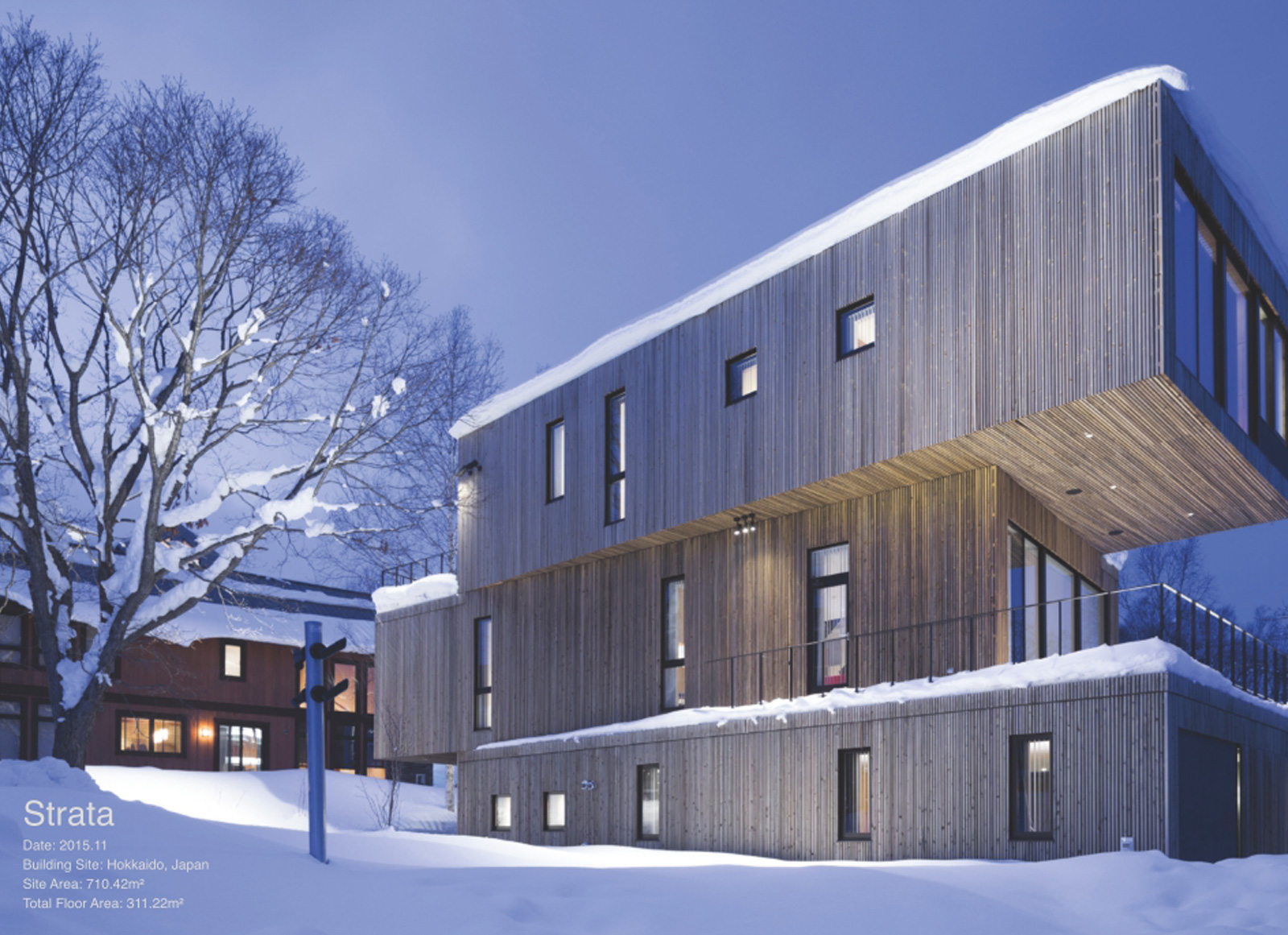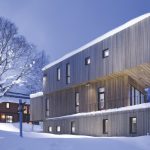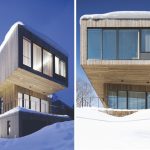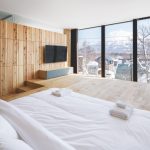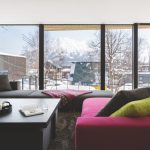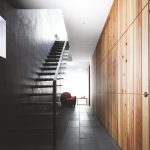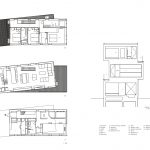Strata | SAAD / Sudo Associates, Architecture and Design | International Architecture Awards 2019
The Strata House pushes the boundaries of residential design with an abstracted design far from the familiarities of typical housing tropes. Three cleanly defined rectilinear blocks stack up in a seemingly carefree manner, the gesture akin to a child’s play of building blocks writ large.
The house is decidedly contemporary, yet the architectural gymnastics is derived from the more grounded, holistic integration of client requirements, considerate site response and fulfilment of very basic needs.
The site is bordered by a house on one side, another to the rear and a view of Mt. Yotei to the front in the northeast. The house is placed length-wise toward the premium vista, with a cluster of existing trees tucked in between the house and neighbour on the side. Rather than blocking the prized mountain view, this arrangement generously shares it by allowing visual porosity through the plot.
The client had requested for a continuous entertainment space that extends into the outdoors. The house’s stacked composition results in several sheltered outdoor spaces that become a parking lot on the ground storey and balcony on the second storey abutting the living space. The client also desired a clear view of Mt. Yotei, which comes about through the slight shift of the second storey volume.
The form follows function adage is thus well exemplified in the Strata house. The brevity of formal gestures reflects a reductionist approach, where nothing is done in excess. This fulfils yet another of the client’s request – that there should be no wastage of space in the design of the house.
The architectural stratification mirrors the organisation of the internal layout to facilitate the entertainment of guests. On the ground storey is the garage, storage, spa and Japanese onsen-style bath laid in continuous sequence; on the second storey are communal spaces comprising living, dining, kitchen and balcony; the most private zone for sleeping is tucked away on the third storey.
Throughout, spaces are arranged to flow seamlessly into the next. Long, under-utilised corridors are absent, and each space is of good size. The building’s tectonics also produces remnant edge surfaces where snow can settle. Thus in winter, the house, cloaked in white, blends into the environment.
In summer, the sandy tones of the timber-clad shell means the house becomes one with the trees. This is another way the house engages with nature. The cedar wood from Southern Hokkaido is selected as it thrives in heavy snow environment, and is softer, lighter and more durable. It also provides thermal insulation but is resistant to twist and cracks. An indigenous material, its use reduces the project’s carbon footprint and supports the local economy and artisans. 8,000 timber pieces are used for the façade in all, applied by a single artisan.
Architects: SAAD / Sudo Associates, Architecture and Design
3rd Award – Category: Residential
Project Location: Hokkaido, Japan
Project Team: Tomoyuki Sudo
Country: Japan


